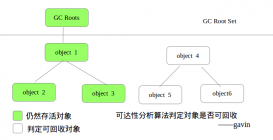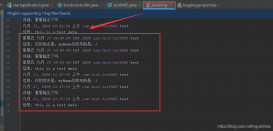在介绍spring的启动之前,先来说下启动过程中使用到的几个类
基本组件
1、BeanFactory:spring底层容器,定义了最基本的容器功能,注意区分FactoryBean
2、ApplicationContext:扩展于BeanFactory,拥有更丰富的功能。例如:添加事件发布机制、父子级容器,一般都是直接使用ApplicationContext。
3、Resource:bean配置文件,一般为xml文件。可以理解为保存bean信息的文件。
4、BeanDefinition:beandifinition定义了bean的基本信息,根据它来创造bean
基础流程
不管是哪种系列的spring(springframework、springmvc、springboot、springcloud),Spring的启动过程主要可以分为两部分:
第一步:解析成BeanDefinition:将bean定义信息解析为BeanDefinition类,不管bean信息是定义在xml中,还是通过@Bean注解标注,都能通过不同的BeanDefinitionReader转为BeanDefinition类,将BeanDefinition向Map中注册 Map<name,beandefinition>。这里分两种BeanDefinition,RootBeanDefintion和BeanDefinition。RootBeanDefinition这种是系统级别的,是启动Spring必须加载的6个Bean。BeanDefinition是我们定义的Bean。
第二步:参照BeanDefintion定义的类信息,通过BeanFactory生成bean实例存放在缓存中。这里的BeanFactoryPostProcessor是一个拦截器,在BeanDefinition实例化后,BeanFactory生成该Bean之前,可以对BeanDefinition进行修改。BeanFactory根据BeanDefinition定义使用反射实例化Bean,实例化和初始化Bean的过程中就涉及到Bean的生命周期了,典型的问题就是Bean的循环依赖。接着,Bean实例化前会判断该Bean是否需要增强,并决定使用哪种代理来生成Bean。
Springframework
1、容器类
在一般性的spring项目中,大家应该也都知道,一般是通过直接实例化applicationContext类,来实现项目的启动 下面我们来看下通过注解的方式来启动的情况,注解容器定义如下:
|
1
2
3
4
5
6
7
8
9
10
11
|
public AnnotationConfigApplicationContext(Class<?>... componentClasses) { this(); register(componentClasses); refresh();} public AnnotationConfigApplicationContext() { this.reader = new AnnotatedBeanDefinitionReader(this); this.scanner = new ClassPathBeanDefinitionScanner(this);} |
创建了注解定义bean读取器和配置文件定义bean扫描器
2、注解定义bean读取器
进入该类构造器中,可以看到最终会执行该方法:
|
1
2
3
4
5
6
7
8
9
10
11
12
13
14
15
16
17
18
19
20
21
22
23
24
25
26
27
28
29
30
31
32
|
public static Set<BeanDefinitionHolder> registerAnnotationConfigProcessors( BeanDefinitionRegistry registry, @Nullable Object source) { DefaultListableBeanFactory beanFactory = unwrapDefaultListableBeanFactory(registry); if (beanFactory != null) { if (!(beanFactory.getDependencyComparator() instanceof AnnotationAwareOrderComparator)) { beanFactory.setDependencyComparator(AnnotationAwareOrderComparator.INSTANCE); } if (!(beanFactory.getAutowireCandidateResolver() instanceof ContextAnnotationAutowireCandidateResolver)) { beanFactory.setAutowireCandidateResolver(new ContextAnnotationAutowireCandidateResolver()); } } Set<BeanDefinitionHolder> beanDefs = new LinkedHashSet<>(8); if (!registry.containsBeanDefinition(CONFIGURATION_ANNOTATION_PROCESSOR_BEAN_NAME)) { RootBeanDefinition def = new RootBeanDefinition(ConfigurationClassPostProcessor.class); def.setSource(source); beanDefs.add(registerPostProcessor(registry, def, CONFIGURATION_ANNOTATION_PROCESSOR_BEAN_NAME)); } if (!registry.containsBeanDefinition(AUTOWIRED_ANNOTATION_PROCESSOR_BEAN_NAME)) { RootBeanDefinition def = new RootBeanDefinition(AutowiredAnnotationBeanPostProcessor.class); def.setSource(source); beanDefs.add(registerPostProcessor(registry, def, AUTOWIRED_ANNOTATION_PROCESSOR_BEAN_NAME)); } ...} |
注册了6个RootBeanDefinition,即系统级别的BeanDefinition。同时,经过调用registerPostProcessor->registerBeanDefinition,可以看到注册BeanDefinition其实就是放到BeanFactory的缓存中。
|
1
2
3
4
5
6
7
8
|
DefaultListableBeanFactory.java类中 public void registerBeanDefinition(String beanName, BeanDefinition beanDefinition) throws BeanDefinitionStoreException { ... this.beanDefinitionMap.put(beanName, beanDefinition); ... } |
上面的6个beanDefinition的实例参数中都有一个postprocessor后缀的类,我们分别点击进入查看即继承关系,可以看到,最终都继承自``接口
|
1
2
3
4
5
6
7
8
9
|
public interface BeanDefinitionRegistryPostProcessor extends BeanFactoryPostProcessor { void postProcessBeanDefinitionRegistry(BeanDefinitionRegistry var1) throws BeansException;} @FunctionalInterfacepublic interface BeanFactoryPostProcessor { void postProcessBeanFactory(ConfigurableListableBeanFactory var1) throws BeansException;} |
3、BeanFactoryPostProcessor
1、BeanFactoryPostProcessor是spring初始化bean的扩展点。
官文翻译如下:允许自定义修改应用程序上下文的bean定义,调整上下文的基础bean工厂的bean属性值。应用程序上下文可以在其bean定义中自动检测BeanFactoryPostProcessor bean,并在创建任何其他bean之前先创建BeanFactoryPostProcessor。
BeanFactoryPostProcessor可以与bean定义交互并修改bean定义,但绝不能与bean实例交互。这样做可能会导致bean过早实例化,违反容器并导致意外的副作用。如果需要bean实例交互,请考虑实现BeanPostProcessor。实现该接口,可以允许我们的程序获取到BeanFactory,从而修改BeanFactory,可以实现编程式的往Spring容器中添加Bean。
也就是说,我们可以通过实现BeanFactoryPostProcessor接口,获取BeanFactory,操作BeanFactory对象,修改BeanDefinition,但不要去实例化bean。
2、BeanDefinitionRegistryPostProcessor是BeanFactoryPostProcessor的子类,在父类的基础上,增加了新的方法,允许我们获取到BeanDefinitionRegistry,从而编码动态修改BeanDefinition。
例如往BeanDefinition中添加一个新的BeanDefinition。
这两个接口是在AbstractApplicationContext#refresh方法中执行到invokeBeanFactoryPostProcessors(beanFactory);方法时被执行的。
3、示例代码如下:
|
1
2
3
4
5
6
7
8
9
10
11
12
13
14
15
16
17
18
19
20
21
22
23
24
25
26
27
28
29
30
31
32
33
34
35
36
37
38
39
40
41
42
43
44
45
46
47
48
49
50
51
52
53
54
55
56
57
58
|
@Repositorypublic class OrderDao { public void query() { System.out.println("OrderDao query..."); }}public class OrderService { private OrderDao orderDao; public void setDao(OrderDao orderDao) { this.orderDao = orderDao; } public void init() { System.out.println("OrderService init..."); } public void query() { orderDao.query(); }} @Componentpublic class MyBeanDefinitionRegistryPostProcessor implements BeanDefinitionRegistryPostProcessor { @Override public void postProcessBeanDefinitionRegistry(BeanDefinitionRegistry registry) throws BeansException { //向Spring容器中注册OrderService BeanDefinition beanDefinition = BeanDefinitionBuilder.genericBeanDefinition(OrderService.class) //这里的属性名是根据setter方法 .addPropertyReference("dao", "orderDao") .setInitMethodName("init") .setScope(BeanDefinition.SCOPE_SINGLETON) .getBeanDefinition(); registry.registerBeanDefinition("orderService", beanDefinition); } @Override public void postProcessBeanFactory(ConfigurableListableBeanFactory beanFactory) throws BeansException { // 在这里修改orderService bean的scope为PROTOTYPE BeanDefinition beanDefinition = beanFactory.getBeanDefinition("orderService"); beanDefinition.setScope(BeanDefinition.SCOPE_PROTOTYPE); }} |
回到上面,我们拿ConfigurationClassPostProcessor来说:在Spring中ConfigurationClassPostProcessor同时实现了BeanDefinitionRegistryPostProcessor接口和其父类接口中的方法。
1、ConfigurationClassPostProcessor#postProcessBeanFactory:主要负责对Full Configuration 配置进行增强,拦截@Bean方法来确保增强执行@Bean方法的语义。
2、ConfigurationClassPostProcessor#postProcessBeanDefinitionRegistry:负责扫描我们的程序,根据程序的中Bean创建BeanDefinition,并注册到容器中。
我们进入到:
|
1
2
3
4
5
6
7
8
9
10
11
12
13
14
15
16
17
18
19
20
21
22
23
24
25
|
private void loadBeanDefinitionsForConfigurationClass( ConfigurationClass configClass, TrackedConditionEvaluator trackedConditionEvaluator) { if (trackedConditionEvaluator.shouldSkip(configClass)) { String beanName = configClass.getBeanName(); if (StringUtils.hasLength(beanName) && this.registry.containsBeanDefinition(beanName)) { this.registry.removeBeanDefinition(beanName); } this.importRegistry.removeImportingClass(configClass.getMetadata().getClassName()); return; } if (configClass.isImported()) { registerBeanDefinitionForImportedConfigurationClass(configClass); } for (BeanMethod beanMethod : configClass.getBeanMethods()) { loadBeanDefinitionsForBeanMethod(beanMethod); } loadBeanDefinitionsFromImportedResources(configClass.getImportedResources()); loadBeanDefinitionsFromRegistrars(configClass.getImportBeanDefinitionRegistrars());} |
其中,我们可以看到:
1、通过检查是否有·@import·注解,来注册该导入类到容器中
|
1
2
3
|
if (configClass.isImported()) { registerBeanDefinitionForImportedConfigurationClass(configClass); } |
2、遍历@Configuration类中的@bean注解,将其类注册到容器中
|
1
2
3
|
if (configClass.isImported()) { registerBeanDefinitionForImportedConfigurationClass(configClass); } |
4、refresh
这个方法就是正式进行bean的处理的主要逻辑
|
1
2
3
4
5
6
7
8
9
10
11
12
13
14
15
16
17
18
19
20
21
22
23
24
25
26
27
28
29
30
31
32
33
34
35
36
37
38
39
40
41
42
43
44
45
46
47
48
49
50
51
52
53
54
55
56
57
58
59
60
61
62
63
64
65
66
67
68
69
70
71
72
73
74
75
76
77
78
79
80
|
@Overridepublic void refresh() throws BeansException, IllegalStateException { synchronized (this.startupShutdownMonitor) { // Prepare this context for refreshing. prepareRefresh(); // Tell the subclass to refresh the internal bean factory. ConfigurableListableBeanFactory beanFactory = obtainFreshBeanFactory(); // Prepare the bean factory for use in this context. prepareBeanFactory(beanFactory); try { // Allows post-processing of the bean factory in context subclasses. postProcessBeanFactory(beanFactory); // Invoke factory processors registered as beans in the context. invokeBeanFactoryPostProcessors(beanFactory); // Register bean processors that intercept bean creation. registerBeanPostProcessors(beanFactory); // Initialize message source for this context. initMessageSource(); // Initialize event multicaster for this context. initApplicationEventMulticaster(); // Initialize other special beans in specific context subclasses. onRefresh(); // Check for listener beans and register them. registerListeners(); // Instantiate all remaining (non-lazy-init) singletons. finishBeanFactoryInitialization(beanFactory); // Last step: publish corresponding event. finishRefresh(); } catch (BeansException ex) { if (logger.isWarnEnabled()) { logger.warn("Exception encountered during context initialization - " + "cancelling refresh attempt: " + ex); } // Destroy already created singletons to avoid dangling resources. destroyBeans(); // Reset 'active' flag. cancelRefresh(ex); // Propagate exception to caller. throw ex; } finally { // Reset common introspection caches in Spring's core, since we // might not ever need metadata for singleton beans anymore... resetCommonCaches(); } }} |
前面说的一些扩展点类都是在这里才处理的,spring的扩展机制后面会有专门的文章来讲解。
SpringMVC
而在web项目中,我们一般都是使用的spring mvc,Spring Framework本身没有Web功能,Spring MVC使用WebApplicationContext类扩展ApplicationContext,使得拥有web功能。
那么,Spring MVC是如何在web环境中创建IoC容器呢?web环境中的IoC容器的结构又是什么结构呢?web环境中,Spring IoC容器是怎么启动呢?
1、配置
以Tomcat为例,在Web容器中使用Spirng MVC,必须进行四项的配置:
修改web.xml,添加servlet定义;
编写servletname-servlet.xml(servletname是在web.xm中配置DispactherServlet时使servlet-name的值)配置;
contextConfigLocation初始化参数
配置ContextLoaderListerner;示例配置如下:
|
1
2
3
4
5
6
7
8
9
10
11
12
13
14
15
16
17
18
19
20
21
22
23
24
|
<!-- servlet定义:前端处理器,接受的HTTP请求和转发请求的类 --><servlet><servlet-name>court</servlet-name><servlet-class>org.springframework.web.servlet.DispatcherServlet</servlet-class><init-param> <!-- court-servlet.xml:定义WebAppliactionContext上下文中的bean --> <param-name>contextConfigLocation</param-name> <param-value>classpath*:court-servlet.xml</param-value></init-param><load-on-startup>0</load-on-startup></servlet><servlet-mapping><servlet-name>court</servlet-name><url-pattern>/</url-pattern></servlet-mapping><!-- 配置contextConfigLocation初始化参数:指定Spring IoC容器需要读取的定义了非web层的Bean(DAO/Service)的XML文件路径 --><context-param><param-name>contextConfigLocation</param-name><param-value>/WEB-INF/court-service.xml</param-value></context-param><!-- 配置ContextLoaderListerner:Spring MVC在Web容器中的启动类,负责Spring IoC容器在Web上下文中的初始化 --><listener><listener-class>org.springframework.web.context.ContextLoaderListener</listener-class></listener> |
在web.xml配置文件中,有两个主要的配置:ContextLoaderListener和DispatcherServlet。
同样的关于spring配置文件的相关配置也有两部分:context-param和DispatcherServlet中的init-param。
那么,这两部分的配置有什么区别呢?它们都担任什么样的职责呢?
在Spring MVC中,Spring Context是以父子的继承结构存在的。
Web环境中存在一个ROOT Context,这个Context是整个应用的根上下文,是其他context的双亲Context。
同时Spring MVC也对应的持有一个独立的Context,它是ROOT Context的子上下文。
对于这样的Context结构在Spring MVC中是如何实现的呢?下面就先从ROOT Context入手,ROOT Context是在ContextLoaderListener中配置的,ContextLoaderListener读取context-param中的contextConfigLocation指定的配置文件,创建ROOT Context。
2、启动过程
Spring MVC启动过程大致分为两个过程:
- ContextLoaderListener初始化,实例化IoC容器,并将此容器实例注册到ServletContext中;
- DispatcherServlet初始化;
tomcat在启动的时候,会依次执行listeners的初始化,也就是执行该ContextLoaderListener的初始化,最终会调用下面的代码:
|
1
2
3
4
5
6
7
8
9
10
11
12
13
14
15
16
17
18
19
20
21
22
23
24
25
26
27
28
29
30
31
32
33
34
35
36
37
38
39
40
41
42
43
44
45
46
47
48
49
50
51
52
53
54
55
56
57
58
59
60
61
62
63
64
65
66
67
68
69
70
71
72
73
|
public void contextInitialized(ServletContextEvent event) { this.initWebApplicationContext(event.getServletContext());} public WebApplicationContext initWebApplicationContext(ServletContext servletContext) { //PS : ROOT_WEB_APPLICATION_CONTEXT_ATTRIBUTE=WebApplicationContext.class.getName() + ".ROOT" 根上下文的名称 //PS : 默认情况下,配置文件的位置和名称是:DEFAULT_CONFIG_LOCATION = "/WEB-INF/applicationContext.xml" //在整个web应用中,只能有一个根上下文 if (servletContext.getAttribute(WebApplicationContext.ROOT_WEB_APPLICATION_CONTEXT_ATTRIBUTE) != null) { throw new IllegalStateException("Cannot initialize context because there is already a root application context present - " + "check whether you have multiple ContextLoader* definitions in your web.xml!"); } Log logger = LogFactory.getLog(ContextLoader.class); servletContext.log("Initializing Spring root WebApplicationContext"); if (logger.isInfoEnabled()) { logger.info("Root WebApplicationContext: initialization started"); } long startTime = System.currentTimeMillis(); try { // Store context in local instance variable, to guarantee that // it is available on ServletContext shutdown. if (this.context == null) { // 在这里执行了创建WebApplicationContext的操作 this.context = createWebApplicationContext(servletContext); } if (this.context instanceof ConfigurableWebApplicationContext) { ConfigurableWebApplicationContext cwac = (ConfigurableWebApplicationContext) this.context; if (!cwac.isActive()) { // The context has not yet been refreshed -> provide services such as // setting the parent context, setting the application context id, etc if (cwac.getParent() == null) { // The context instance was injected without an explicit parent -> // determine parent for root web application context, if any. ApplicationContext parent = loadParentContext(servletContext); cwac.setParent(parent); } configureAndRefreshWebApplicationContext(cwac, servletContext); } } // PS: 将根上下文放置在servletContext中 servletContext.setAttribute(WebApplicationContext.ROOT_WEB_APPLICATION_CONTEXT_ATTRIBUTE, this.context); ClassLoader ccl = Thread.currentThread().getContextClassLoader(); if (ccl == ContextLoader.class.getClassLoader()) { currentContext = this.context; } else if (ccl != null) { currentContextPerThread.put(ccl, this.context); } if (logger.isDebugEnabled()) { logger.debug("Published root WebApplicationContext as ServletContext attribute with name [" +WebApplicationContext.ROOT_WEB_APPLICATION_CONTEXT_ATTRIBUTE + "]"); } if (logger.isInfoEnabled()) { long elapsedTime = System.currentTimeMillis() - startTime; logger.info("Root WebApplicationContext: initialization completed in " + elapsedTime + " ms"); } return this.context; } catch (RuntimeException ex) { logger.error("Context initialization failed", ex); servletContext.setAttribute(WebApplicationContext.ROOT_WEB_APPLICATION_CONTEXT_ATTRIBUTE, ex); throw ex; } catch (Error err) { logger.error("Context initialization failed", err); servletContext.setAttribute(WebApplicationContext.ROOT_WEB_APPLICATION_CONTEXT_ATTRIBUTE, err); throw err; } } |
我们注意到这样一句configureAndRefreshWebApplicationContext(cwac, servletContext); 这个就是具体创建容器的方法,我们进入去看看
|
1
2
3
4
5
6
7
8
9
10
11
12
13
14
15
16
17
18
19
20
21
22
23
24
25
26
27
28
29
30
31
32
33
34
35
|
protected void configureAndRefreshWebApplicationContext(ConfigurableWebApplicationContext wac, ServletContext sc) { if (ObjectUtils.identityToString(wac).equals(wac.getId())) { // The application context id is still set to its original default value // -> assign a more useful id based on available information String idParam = sc.getInitParameter(CONTEXT_ID_PARAM); if (idParam != null) { wac.setId(idParam); } else { // Generate default id... wac.setId(ConfigurableWebApplicationContext.APPLICATION_CONTEXT_ID_PREFIX + ObjectUtils.getDisplayString(sc.getContextPath())); } } wac.setServletContext(sc); String configLocationParam = sc.getInitParameter(CONFIG_LOCATION_PARAM); if (configLocationParam != null) { wac.setConfigLocation(configLocationParam); } // The wac environment's #initPropertySources will be called in any case when the context // is refreshed; do it eagerly here to ensure servlet property sources are in place for // use in any post-processing or initialization that occurs below prior to #refresh ConfigurableEnvironment env = wac.getEnvironment(); if (env instanceof ConfigurableWebEnvironment) { ((ConfigurableWebEnvironment) env).initPropertySources(sc, null); } customizeContext(sc, wac); wac.refresh();} |
我们注意到wac.refresh();看起来是不是有点熟悉了,进入看看:
|
1
2
3
4
5
6
7
8
9
10
11
12
|
public final void refresh() throws BeansException, IllegalStateException { try { super.refresh(); } catch (RuntimeException ex) { WebServer webServer = this.webServer; if (webServer != null) { webServer.stop(); } throw ex; }} |
这里的super根据继承关系,我们知道,最终就是进入到了springframework中的refresh中,这个方法我们在上面已经说过了。
SpringBoot
启动入口方法如下:
|
1
2
3
|
public static void main(String[] args) { SpringApplication.run(ConsulApplication.class, args); } |
通过代码的层层调用,最终会走到这样的代码中:
|
1
2
3
4
5
6
7
8
9
10
11
12
13
14
15
16
17
18
19
20
21
22
23
24
25
26
27
28
29
30
31
32
33
34
35
36
37
38
39
40
41
42
43
|
public ConfigurableApplicationContext run(String... args) { StopWatch stopWatch = new StopWatch(); stopWatch.start(); ConfigurableApplicationContext context = null; Collection<SpringBootExceptionReporter> exceptionReporters = new ArrayList(); this.configureHeadlessProperty(); SpringApplicationRunListeners listeners = this.getRunListeners(args); listeners.starting(); Collection exceptionReporters; try { ApplicationArguments applicationArguments = new DefaultApplicationArguments(args); ConfigurableEnvironment environment = this.prepareEnvironment(listeners, applicationArguments); this.configureIgnoreBeanInfo(environment); Banner printedBanner = this.printBanner(environment); context = this.createApplicationContext(); exceptionReporters = this.getSpringFactoriesInstances(SpringBootExceptionReporter.class, new Class[]{ConfigurableApplicationContext.class}, context); this.prepareContext(context, environment, listeners, applicationArguments, printedBanner); this.refreshContext(context); this.afterRefresh(context, applicationArguments); stopWatch.stop(); if (this.logStartupInfo) { (new StartupInfoLogger(this.mainApplicationClass)).logStarted(this.getApplicationLog(), stopWatch); } listeners.started(context); this.callRunners(context, applicationArguments); } catch (Throwable var10) { this.handleRunFailure(context, var10, exceptionReporters, listeners); throw new IllegalStateException(var10); } try { listeners.running(context); return context; } catch (Throwable var9) { this.handleRunFailure(context, var9, exceptionReporters, (SpringApplicationRunListeners)null); throw new IllegalStateException(var9); } } |
可以看到,又走到了大家都熟悉的spring启动代码里面去了。
综上:可以看出,不管是哪种系列的spring,最终都会走到spring基本的启动流程中,无非就是根据自己的特性需要加了一些额外的处理罢了。
总结
到此这篇关于Spring体系的各种启动流程的文章就介绍到这了,更多相关Spring启动流程内容请搜索服务器之家以前的文章或继续浏览下面的相关文章希望大家以后多多支持服务器之家!
原文链接:https://blog.csdn.net/m0_47495420/article/details/114422268














